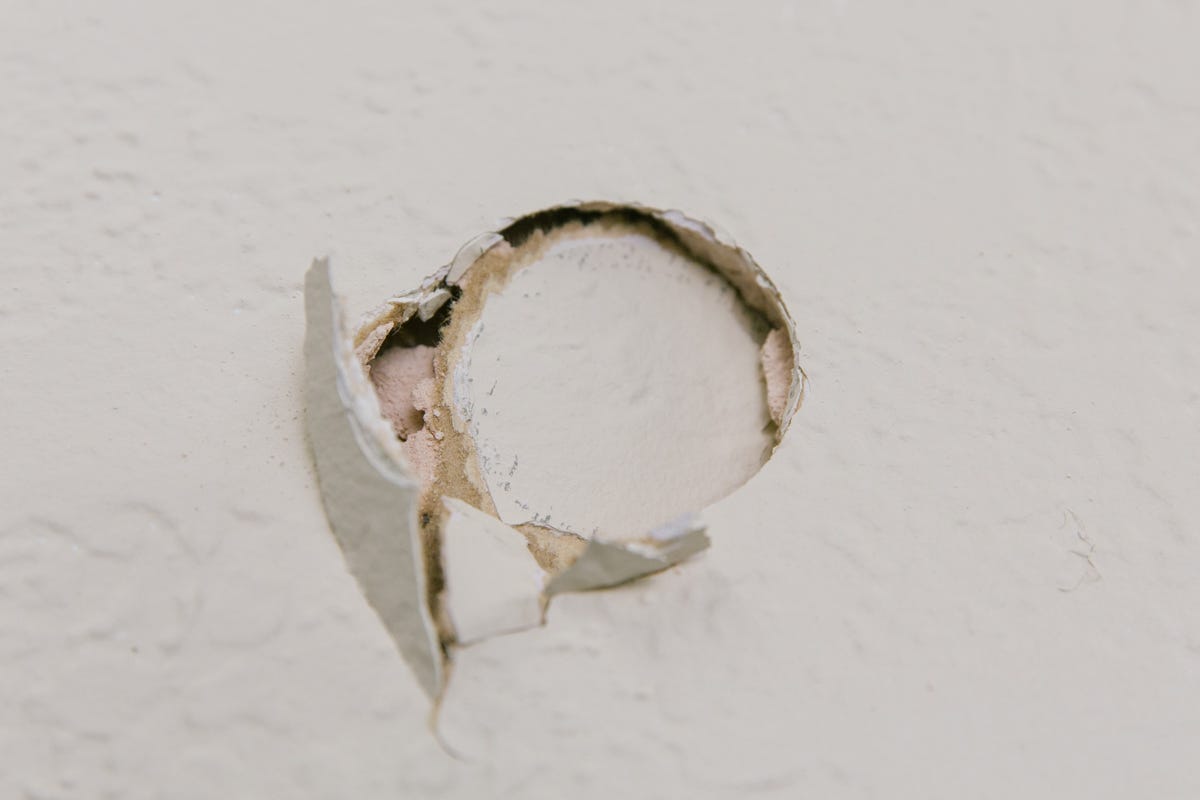
"While I would typically advise homeowners to hire a drywall professional, you can, for the most part, do it yourself."
This post originally appeared in The Seattle Times.
I'm often presented with the question, “Can I repair a hole in my drywall myself?” While I would typically advise homeowners to hire a drywall professional, I know it can be difficult to get one out for such a small project and on short notice if you need it done quickly. For the most part, though, you can do it yourself.
The job will require a few basic drywall tools and materials and will take several days to complete because of the necessary drying time. Follow the steps below to complete your own drywall patch.

Step 1: Protect your floor
Put down floor protection and have a vacuum ready.
Step 2: Prep hole in wall
Using a framing square or level, draw a square on the drywall slightly larger than the damaged area. Cut along your marks with a drywall saw and remove the cutout.
Install a piece of wood to act as a backer and secure it with screws. Be careful to seat the screws just below flush but not so deep as to break the drywall.
Cut the drywall patch to size, and place it in the hole.
Step 3: Mud and tape patch seams
Joint compound and tape will help the seams of your drywall patch disappear and prevent cracks later.
Apply joint compound (mud) to a seam using a 4” drywall knife. The mud should be mixed and smooth; for patches, use topping or all-purpose compound. Make sure the layer of mud exceeds the length of your seams by an inch at each end.
Cut the tape an inch or so longer than the seam. Press it into the mud, using a drywall knife to smooth it flat. Use your knife to remove any excess mud from the tape’s edges.
Repeat for the remaining seams of your patch. Make sure the tape overlaps at the corners.
Apply a thin coat of mud on top of the tape using a 6” (or wider) drywall knife, and feather out the edges of the mud to prevent ridges. This coat of mud will help seat the tape underneath and start the feathering out of the patch—making it less noticeable in the end.
Clean your tools with water and let dry overnight.
Step 4: Apply next coat of mud and feather out
The joint compound is used to fill the seams but also to feather out the buildup on the surface so it looks flat. The farther the feathering goes, the harder it is to see the seams.
Hold your 6” drywall knife comfortably and apply the proper amount of compound. Again, the mud should be mixed and smooth—for patches, use topping or all-purpose compound. Transfer mud with your knife into a drywall pan, and hold the pan in one hand while you apply the mud with your knife in the other.
Build enough thickness to make the tape disappear, and after you have built-up mud in the designated area, take your widest knife and skim the mud to make it smooth, flat, and feathered out. Feather it beyond the tape at least 6” on this coat. This helps to minimize sanding when dry.
Clean your tools with water and let everything dry overnight.
Step 5: Sand compound and apply successive coats
Using a drywall sanding pad and drywall sandpaper, carefully sand the mud as flat as possible without exposing the tape. The mud’s edges that interface with the original wall surface should be a smooth transition with no ridges.
Repeat steps four and five for additional coats as necessary, feathering out the mud farther each time. Multiple coats may be needed if the wall is a smooth wall versus a textured one.
Let dry and sand smooth again.
If the wall is textured, it can now be finished to match an “orange peel” or “knockdown” texture. If using cans of spray texture, read and follow the directions for proper application, and practice on a spare scrap of cardboard or drywall. Multiple coats may be needed if the wall is smooth.
Step 6: Clean up and paint
You can prime the new spot, but I find it best to paint the entire wall from corner to corner for the best match.
Don’t worry if it doesn’t look perfect—your patch can always be fixed later. In the meantime, be happy your home is ready for any guests who may visit—and I hope you now have a better understanding of hands-on plaster and drywall.
For more from Daniel, read his blog posts on fit-and-finish layouts, how to repair historic siding, and how to install custom cabinets.


